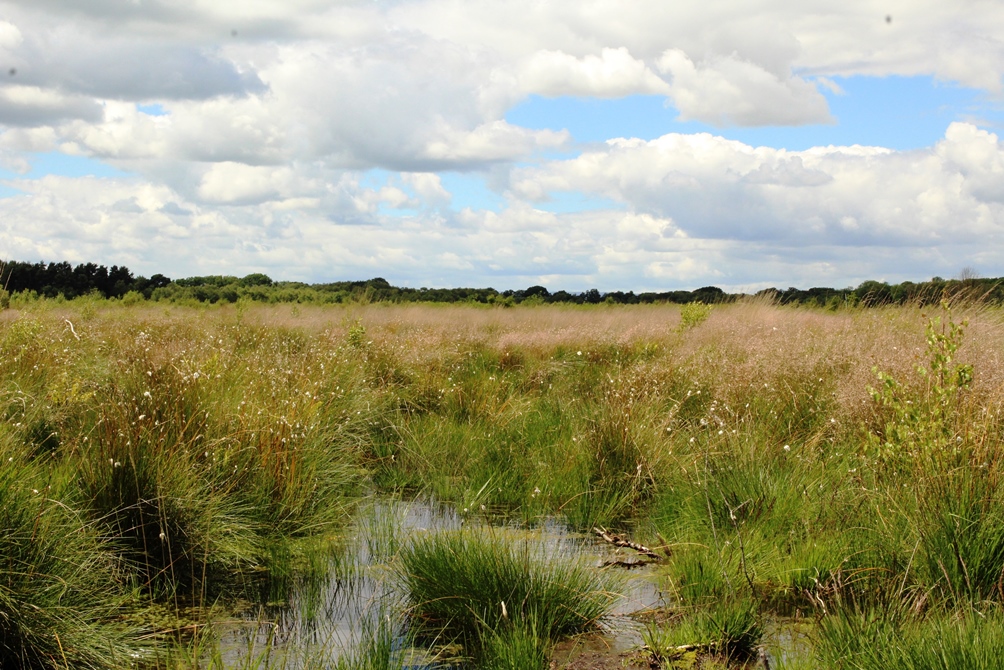Climate Crisis
Fenn’s, Whixall and Bettisfield Mosses are a major store of carbon, thus helping to fight the climate crisis.
Note: The links in this page take you to links on other pages in this website. Some of those may then take you to external links.
Regenerating the peat at the The Marches Mosses aids in the fight against the climate crisis by storing more carbon. Peat stores more carbon per acre than trees do. Restoring the peat creates additional depth of peat which in turn stores even more carbon. Conversely, allowing peatlands to dry out releases that stored carbon into the atmosphere.
You can read more about the benefits of the Marches Mosses in the fight against climate change in the stories that follow.
The Story of Peat
A little over 3% of the earth is covered in peat. However, in the United Kingdom, about 8% of our land is made up of peat. This is a globally rare environment and we have a comparatively large amount of it.
Peat is 90% water and plays an important role in protection against flooding, water quality and carbon storage. Peatlands in the UK store approximately 5.5 billion tonnes of carbon. This is 36 times more than all of our woodlands store.
You can read the entire story here.

Whixall Moss Credit: Tim Walter
Study Shows Bogs are Best
A recent scientific study headed by Angela Creevy of Edge Hill University has shown that a ground cover of Sphagnum bog moss along with other bog plants is best for taking greenhouse gases out of the atmosphere.
You can read more about the study here.
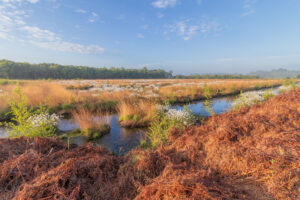
Marches Mosses in the Sun Credit:
Stephen Barlow
Sphagnum moss
Sphagnum moss is the major building block of peat. Peat, in turn, is a huge carbon store, helping to fight the climate crisis. You can read more about Sphagnum here.
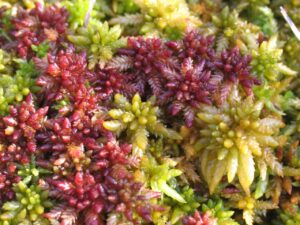
Sphagnum magellanicum and S. papillosum Credit: Colin Hayes
Rare Moss found on Marches Mosses
One of the rarest bog plants, the moss Dicranum undulatum, commonly called Waved Fork-moss, has been found on several sites on the Marches Mosses, which encompasses Fenn’s, Whixall and Bettisfield Mosses.
Robert Duff, Natural England Project Manager for the Mosses BogLIFE Project, explains: “It’s a sign of a thriving, healthy, high-quality bog. The recent results are a milestone in ongoing efforts to restore favourable conditions across the whole of Fenn’s, Whixall and Bettisfield Mosses.”
You can read the entire story here.
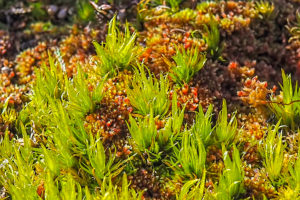
Dicranum undulatum Credit: Dr. Des Callahan
Scrapyard Regeneration
In 2016, Shropshire Wildlife Trust bought the scrapyard that had been on the peat for around 60 years. Since purchasing the site, Shropshire Wildlife Trust has cleared the scrapyard and regenerated the site. Helping to store carbon, an asset in the fight against climate change. You can read more about the work in these news stories:
Update on Peatbog Habitat Re-creation on the Marches Mosses
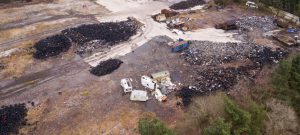
The Scrapyard at Whixall Moss During Clean-up
Highest Rainfall in Thirty Years During 2019
Records indicate that 2019 had the highest amount of rainfall in 30 years on the Mosses – 1080 cm (425 inches). The changes at Fenn’s and Whixall Mosses, where huge variations in rainfall put more pressure on the rare, specialist bog plants that are basis for the ecosystem’s sustainability.
Climate change analysis by UK scientists indicates that the climate is changing and will continue to change. Forecasters believe winters will continue to be wetter and summers drier as a result of the changing climate.
Much of the work being done at Fenn’s and Whixall is to create bunds – low banks that capture rainwater in pools, helping to slow the flow of water off the Mosses to downstream tributaries.
You can read more about the record rainfall here.
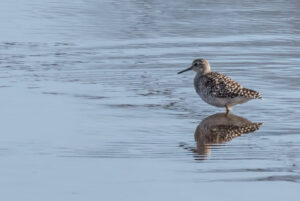
Wood Sandpiper at Sinker’s Fields Credit: Stephen Barlow
Frequently Asked Questions
We published a list of FAQs about the Marches Mosses – from what all those acronyms mean, to how the peat was formed, to what you can do to help preserve the peat. You can read the FAQs here.


